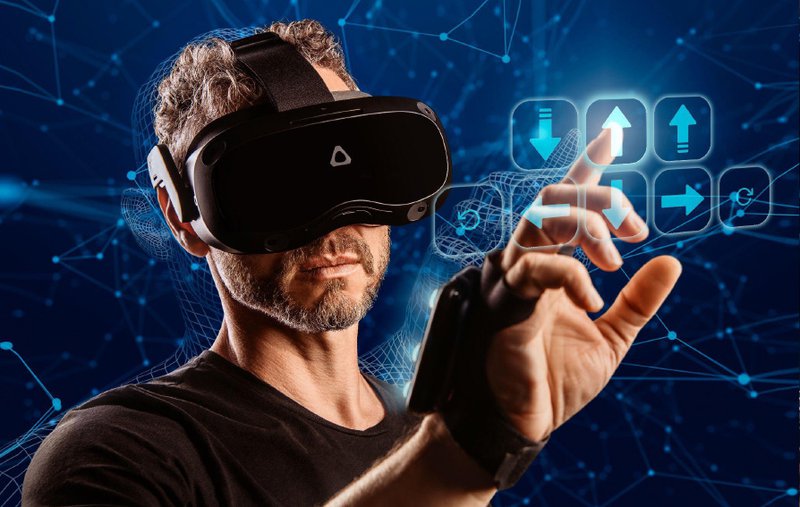Innovating Forensic Investigation with VR - The HTC VIVE/BLKA "Holodeck" Project

Public Safety | Training/Simulation | Case Study
4 min read
Law enforcement and forensic investigation have found a groundbreaking application that promises to revolutionize how crime scenes are analyzed, preserved, and presented. The Bavarian State Criminal Police Office (Bayerisches Landeskriminalamt, BLKA) launched an ambitious project, partnering with HTC VIVE, to create a VR platform dubbed the "Holodeck." This platform offers an immersive, photorealistic replication of crime scenes, enabling a wide range of users, from police officers to legal experts, to explore and interact with these environments in unprecedented ways.
Navigating complex integration and VR limitations in Law Enforcement Training
The primary challenge faced by the BLKA team was integrating multiple users into a seamless application, with particular emphasis on usability and user freedom of movement. VR hardware limitations constrained the initial stages of development, precisely the inability of wireless adapters to handle the extensive data of virtual crime scenes. A further challenge was caused by the complexity of coordinating multiple headsets' coordinate origins, which is crucial for aligning virtual avatars with the real-world environment.
Additionally, the project's ambitious scope required hands-on support from HTC VIVE to address development challenges, future-proof the technology, and ensure compatibility with emerging features like face and eye tracking.
Overcoming obstacles with advanced technology and strategic partnerships
The project's turning point came with the release of the VIVE Focus 3, which provided the necessary wireless capabilities and software support to overcome the initial data transmission challenges. The introduction of the VIVE Location-Based Software Suite's (LBSS) LBE mode allowed for consistent coordination across headsets, streamlining the integration of motion-captured avatars and ensuring uniformity of the virtual and physical spaces. HTC VIVE's responsive support was pivotal throughout these technical hurdles, offering timely solutions and facilitating continuous progress.
"The support for development has always helped us immediately with our questions, and they try to be as close as possible to their customers. VIVE offers a good amount of official documentation of their products regarding Unreal Engine and Unity development. The VIVE forum is well visited, and questions and answers of the community are widely spread on the internet. And most importantly, the Focus 3 is reliable and resilient and offers a variety of additional tools like the VIVE LBSS's LBE and VO modes for free-roam multi-user experiences."— Ralf Breker, Head of the Forensic Media Technology Department, BLKA

Innovation and Features:
Several key innovations distinguish the "Holodeck" project:
- Role Concept: The 70-square-meter Holodeck room is divided into two areas. Users are assigned specific roles, such as spectators, users, and moderators, enabling structured interaction within the virtual crime scene. Passive users in the spectator area use wired VR headsets, while the active users wear wireless VIVE Focus 3 headsets and can move freely through the scene. This feature is crucial for applications like court proceedings, where clear, guided presentations of evidence are necessary.
- User-Identical Avatars: The platform leverages photogrammetry and motion capture technology to create ultra-realistic avatars. The full-body scanner has seventy cameras that take pictures at the same moment. Then, these seventy images are combined to form a 3D model or avatar that looks just like the user, enhancing the sense of presence and personalization.
- Motion Capture/Face/Eye Tracking: Sixteen cameras detect user movements using markers on their body. These cameras can track your hand, foot, back, and head movements. Additionally, eye and face tracking captures and replicates user eye movements and facial expressions on the avatar. The VIVE Focus 3 Eye- and Face Trackers enable a personal touch in the virtual world, making digital communication feel more like a real conversation, which is particularly useful for law enforcement training and interviews in VR.
- Multiplatform Compatibility: The software supports various devices (PCs, smartphones, tablets, etc.) and all current 3D technologies (VR, AR, MR), ensuring accessibility for users with varying technical expertise and equipment availability.
- Multi-User Application: Up to 100 users can participate simultaneously, allowing for comprehensive, collaborative sessions among law enforcement personnel, regardless of physical location.
Impact:
The "Holodeck" has significantly advanced the capabilities of forensic investigation in several ways:
- Crime Scene Preservation: Virtual environments preserve crime scenes indefinitely, enabling detailed examinations long after the physical sites have been altered or eliminated.
- Collaborative Analysis: The platform facilitates real-time collaboration among investigators, allowing for immediate discussion and analysis of crime scenes from any location.
- Training and Education: Beyond investigations, the "Holodeck" is a valuable tool for training law enforcement personnel. It provides realistic scenarios for practice without the constraints of accessing actual crime scenes.
“Due to their conception and the integration of suitable real-time features and tools, the holodeck and its software are much more than just an application for visualizing VR content. Rather, the holodeck represents an innovative, virtual working environment for investigators, experts, and prosecutors. The holodeck is a basis for a virtual criminal platform that offers possibilities for continuous, modular construction. This platform is by no means limited to investigation-supporting, forensic use, but could be expanded at any time to other areas of application, for example, police operational training for the Bavarian Police.” —Ralf Breker, Head of the Forensic Media Technology Department, BLKA.
Conclusion:
The collaboration between the Bavarian State Criminal Police Office and HTC VIVE has yielded a transformative tool in forensic investigations. The "Holodeck" stands as a testament to the potential of virtual reality to enhance public safety, improve investigative accuracy, and streamline legal processes. This project not only showcases the technical ingenuity of its creators but also sets a precedent for the future integration of VR technology in law enforcement and beyond.
The successful implementation of VR in such a critical and sensitive area hinge on innovative thinking, interdisciplinary collaboration, and a deep commitment to overcoming the challenges inherent in pioneering new technologies. The “Holodeck” project proves that VR is a powerful tool for advancing public safety.
If you’re looking for guidance on where to start with any of these aspects of VR/XR development, contact HTC VIVE.